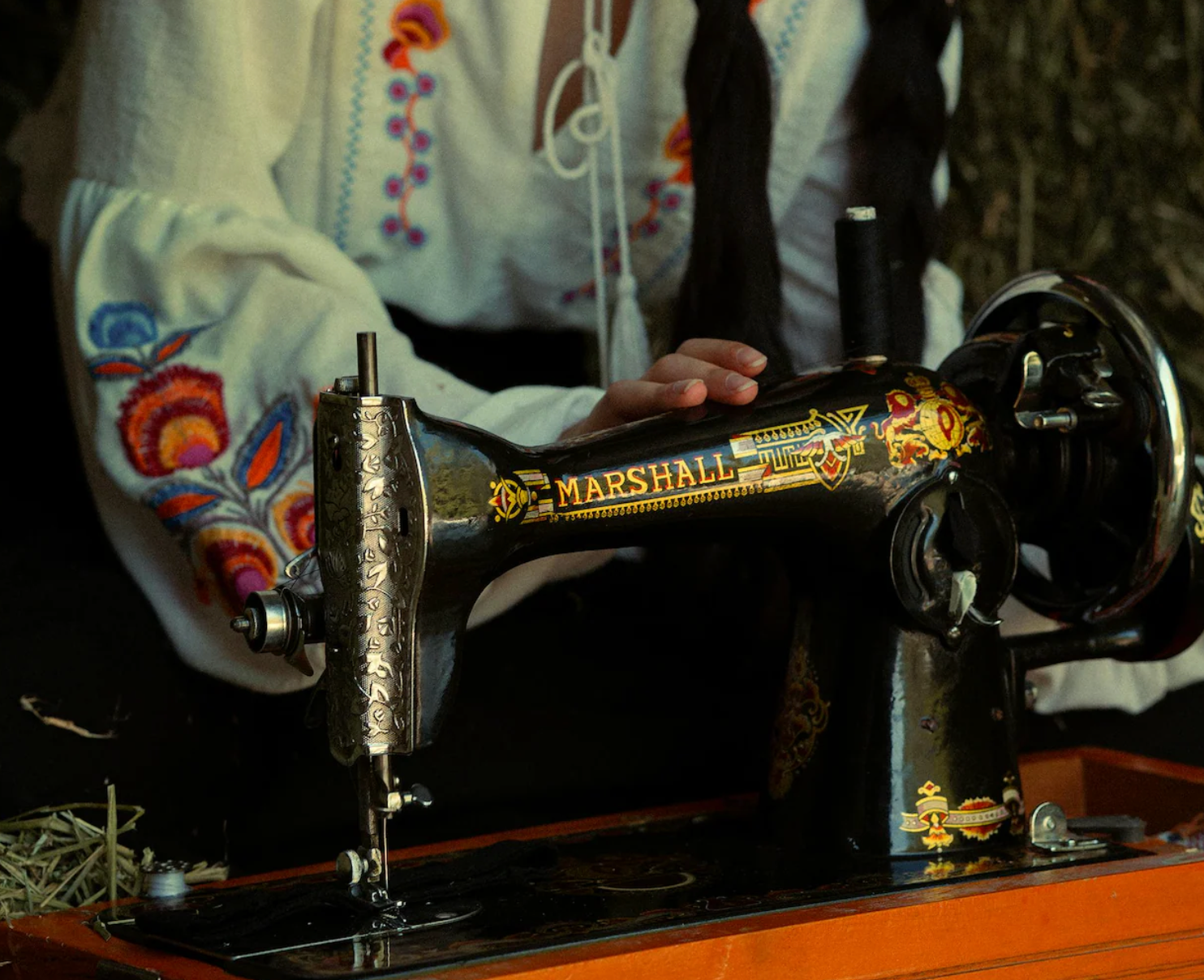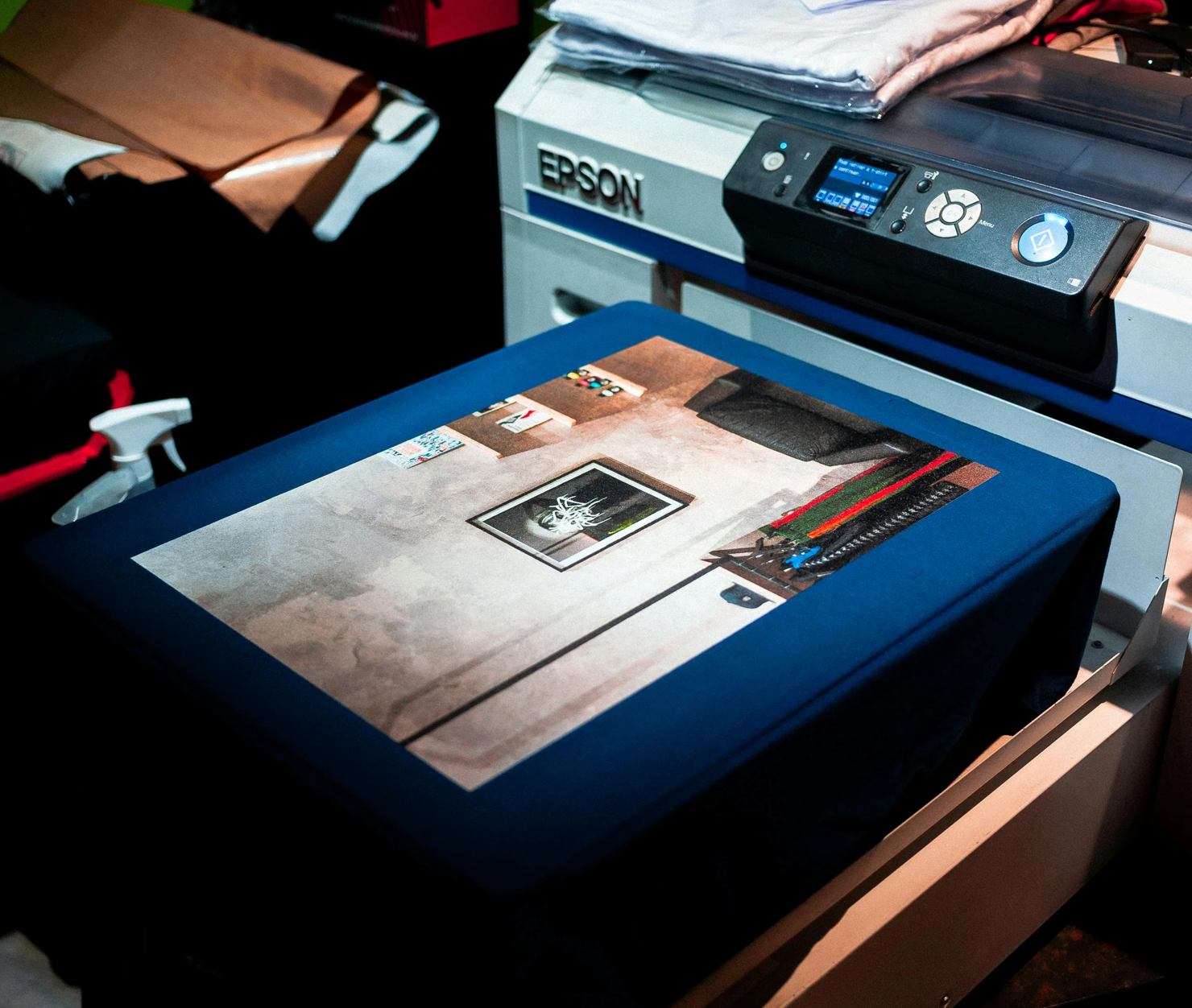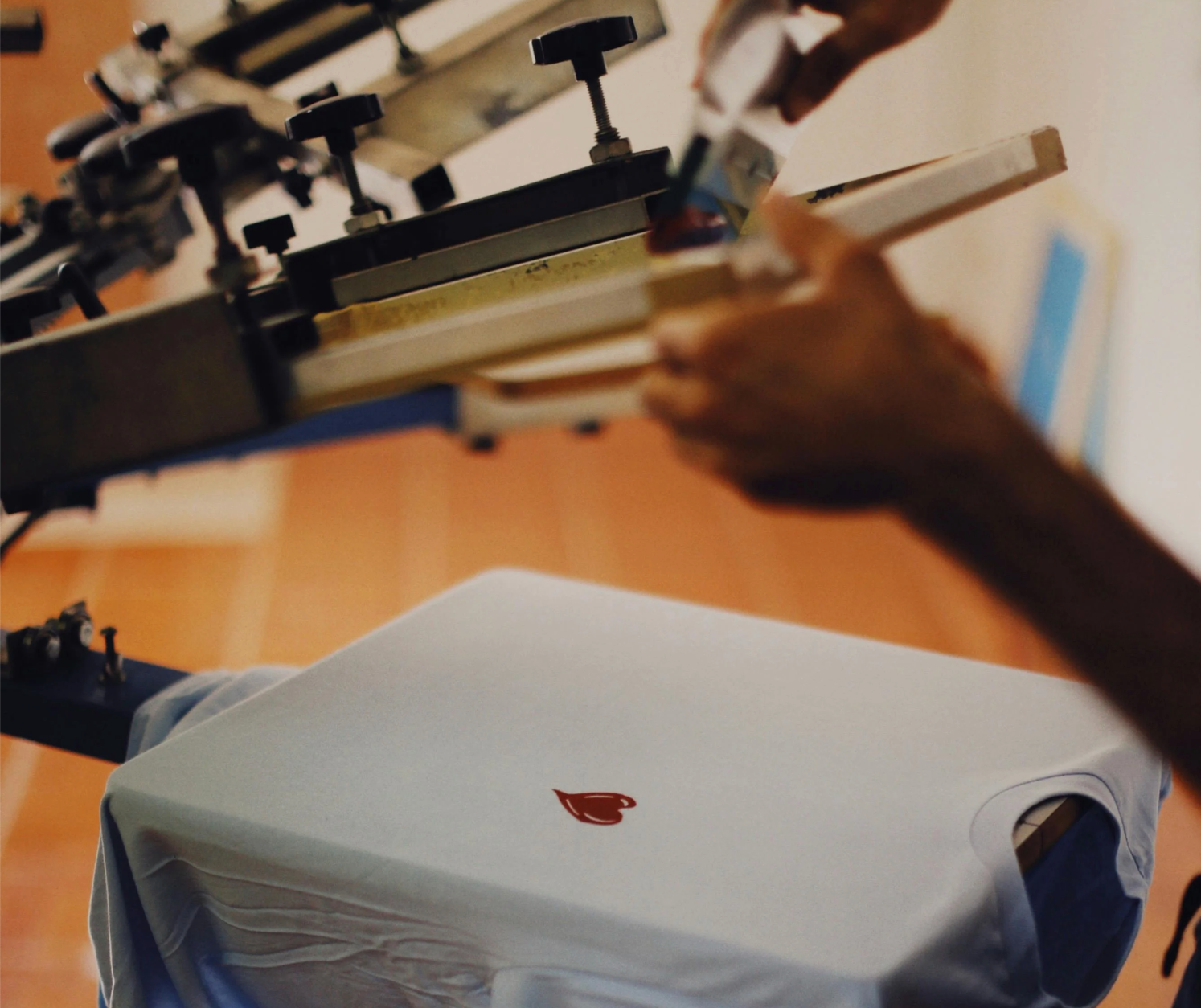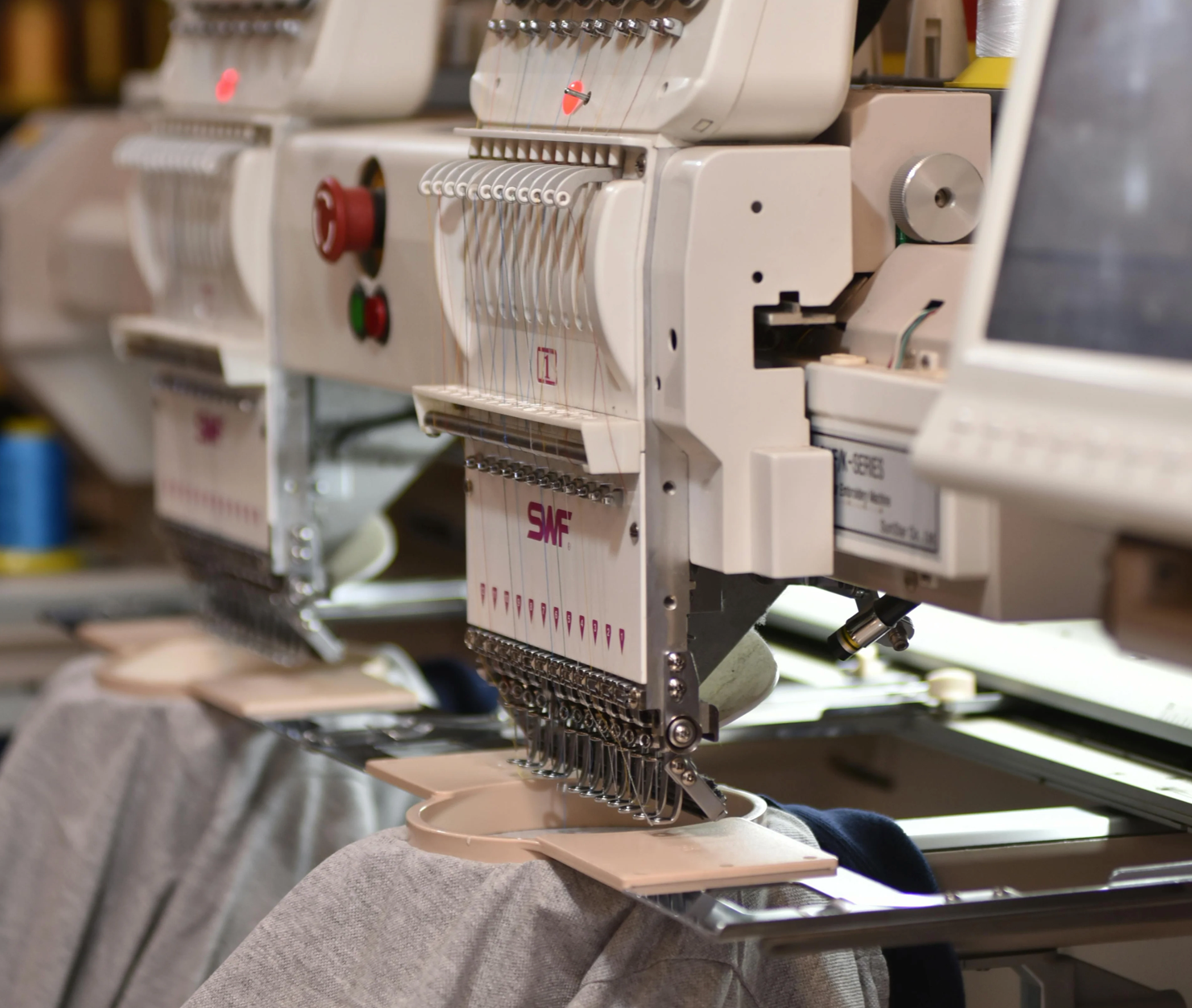"Ik heb mijn kleding al tientallen keren gewassen en het pilt of slijt nog steeds niet, zelfs bij de bedrukking is geen scheurtje te zien. Echt top, ik raad iedereen Trust & Tailor aan"

Het bedrukken / borduren van kleding is een van de oudste beroepen die er bestaat. Vandaar de naam Art Beid, omdat deze vorm van arbeid een ware kunst is.
Verschillende technieken
Om te voldoen aan iedere vraag, bieden wij een breed scala aan verschillende druktechnieken. De meest voorkomende druktechnieken staan bovenstaand beschreven. Toch kan het zijn dat uw wens er niet tussen staat. In dat geval kunt u het beste contact opnemen met een van onze specialisten.
Duurzame alternatieven
Van GOTS gecertificeerde zeefdruk-straten tot watergedragen inkten. Bij Trust & Tailor kan het allemaal. Wij voldoen aan de hoogste eisen en zorgen ervoor dat uw bedrukking lang blijft zitten. Dat is pas echt duurzaam. Benieuwd naar wat wij nog meer doen?
Snelle levertijden
Dagelijks krijgen wij de vraag of we zo snel mogelijk kunnen leveren. Liever gister dan morgen. Om te kunnen voldoen aan deze vraag hebben wij onze processen efficiënt en gestroomlijnd ingericht, zodat u zich kan focussen op wat echt belangrijk is: uw bedrijf.

Een digitale transfer maakt gebruik van slimme printtechnologie om afbeeldingen en tekst rechtstreeks op transferpapier te printen. Deze geprinte afbeelding wordt vervolgens met behulp van hitte op het textiel aangebracht. Deze methode is bijzonder geschikt voor gedetailleerde en kleurrijke ontwerpen en is ideaal voor kleine tot middelgrote oplagen. Het is de perfecte keuze voor promotionele kleding en gepersonaliseerde artikelen die een veelheid aan kleuren of complexe patronen vereisen.
✓ Super snel
✓ Geen opstartkosten
✓ Uiterst geschikt voor kleine oplage
✓ Geschikt voor (bijna) alle soorten textiel

Zeefdruk is een eeuwen oude druktechniek waarbij inkt door een fijn scherm direct op het materiaal wordt aangebracht. Deze methode staat bekend om haar duurzaamheid en is economisch voordelig bij grotere oplagen. Zeefdruk leent zich uitstekend voor T-shirts, zakelijke kleding en promotionele merchandise, vooral wanneer een hoge kleurechtheid en dekkingsgraad vereist zijn.
✓ Duurzaam
✓ Kleurvastheid
✓ Goedkoop bij hoge oplage
✓ Geschikt voor (bijna) alle soorten textiel

Borduren is een techniek waarbij garen door middel van naaldwerk op textiel wordt aangebracht, wat resulteert in een verhoogd en getextureerd effect. Deze methode biedt een luxueuze uitstraling en is daarom bijzonder geschikt voor bedrijfskleding, petten en tassen. Borduren is niet alleen duurzaam, maar verleent ook een onderscheidend en professioneel voorkomen aan kledingstukken en accessoires. Het is met name ideaal voor het aanbrengen van logo’s en monogrammen.
✓ 3D Effect
✓ Duurzaam
✓ Hufter Proof
✓ Luxe uitstraling
✓ Goedkoop bij hoge oplage
✓ Geschikt voor alle soorten textiel
Meer informatie
Digitale Transfer
Digitale transfer is een geavanceerde druktechniek waarbij ontwerpen met een digitale printer op speciaal transferpapier worden gedrukt. Vervolgens wordt dit gedrukte beeld door middel van hitte en druk overgebracht op textiel. Deze methode maakt het mogelijk om gedetailleerde en kleurrijke ontwerpen te creëren, ideaal voor complexe patronen of afbeeldingen.
Voordelen:
Digitale transfer is uitstekend geschikt voor het nauwkeurig reproduceren van full-color en gedetailleerde grafische ontwerpen, zelfs bij kleine productieaantallen. Het is ideaal voor de snelle productie van gepersonaliseerde items of voor kleine tot middelgrote series, waarbij elke afdruk kan variëren zonder bijkomende kosten.
Nadelen:
Na verloop van tijd kunnen de afdrukken vervagen of barsten, vooral na meerdere wasbeurten. Daarnaast kan de printlaag soms stijf aanvoelen, wat het comfort kan verminderen.
Geschikt voor:
Deze techniek wordt veelal toegepast voor het personaliseren van promotionele kleding, zoals T-shirts en hoodies, kleine bedrijfsoplagen, of voor speciale evenementen waar unieke of snel veranderende ontwerpen vereist zijn.
Wasvoorschriften:
Voor optimaal behoud van de print, dient kleding met digitale transfers binnenstebuiten gewassen te worden op een koude of milde temperatuur, zonder het gebruik van bleekmiddelen. Het is aanbevolen om de kleding aan de lucht te laten drogen en niet in de droger te doen, om beschadiging van de print te voorkomen. Bij het strijken dient een beschermende laag tussen het strijkijzer en de print geplaatst te worden om direct contact te vermijden.
Deze drukmethode biedt een uitstekende balans tussen kwaliteit en flexibiliteit, waardoor het een populaire keuze is voor zowel zakelijke als particuliere toepassingen waarbij de kwaliteit van het beeld voorop staat.
Zeefdruk
Zeefdruk is een traditionele drukmethode waarbij gebruik wordt gemaakt van een zeef om inkt rechtstreeks op het materiaal te drukken. Dit proces omvat het aanbrengen van inkt op een zeef die is voorbereid met een vooraf ontworpen afbeelding. De inkt wordt door de open delen van de zeef gedrukt om het ontwerp op het textiel over te brengen.
Voordelen:
Zeefdruk is bijzonder duurzaam en produceert heldere, levendige kleuren die goed bestand zijn tegen frequent wassen en intensief gebruik. De methode is kostenefficiënt bij grote productievolumes, aangezien de kosten per item dalen bij grotere aantallen. Bovendien biedt zeefdruk uitstekende dekking op donkere stoffen, wat ideaal is voor opvallende visuele ontwerpen.
Nadelen:
De initiële opstartkosten kunnen aanzienlijk zijn door de benodigde specifieke schermen voor elk kleurelement, wat deze techniek minder geschikt maakt voor kleine oplagen of frequent wisselende ontwerpen. Ook is zeefdruk minder geschikt voor complexe of fotorealistische afbeeldingen.
Geschikt voor:
Zeefdruk wordt veelal toegepast voor het bedrukken van T-shirts, hoodies, zakelijke uniformen en promotionele artikelen, waarbij duurzaamheid en kleurvastheid essentieel zijn.
Wasvoorschriften:
Kleding bedrukt met zeefdruk dient binnenstebuiten gewassen te worden in koud water met milde wasmiddelen. Het is aan te raden de kleding aan de lucht te laten drogen of op een lage temperatuur in de droger te doen om de print te beschermen. Vermijd het strijken van de bedrukte gebieden om beschadiging te voorkomen.
Borduren
Borduren is een verfijnde techniek waarbij met naald en draad een ontwerp direct op het materiaal wordt aangebracht, wat resulteert in een textuur die zowel tactiel als visueel aantrekkelijk is.
Voordelen:
Borduren is uitzonderlijk duurzaam en creëert een verhoogd, getextureerd effect dat een gevoel van luxe en kwaliteit uitstraalt. Deze methode is bijzonder geschikt voor logo's en monogrammen en biedt een professionele uitstraling, ideaal voor bedrijfskleding en hoogwaardige promotionele artikelen.
Nadelen:
De kosten voor borduren kunnen oplopen bij grote of complexe ontwerpen vanwege de benodigde hoeveelheid draad en de tijd die nodig is om het borduurwerk te voltooien. Borduren is ook minder geschikt voor zeer dunne of delicate stoffen, die kunnen vervormen onder de dichtheid van de stiksels.
Geschikt voor:
Borduren wordt vaak toegepast op polo's, petten, jassen en luxe artikelen waarbij een klassieke en elegante uitstraling gewenst is.
Wasvoorschriften:
Geborduurde items dienen zorgvuldig behandeld te worden; het is aan te raden om deze binnenstebuiten te wassen op een zachte cyclus met koud water en aan de lucht te laten drogen. Strijk geborduurde delen op lage temperatuur en indien mogelijk aan de achterzijde, om beschadiging van de stiksels te voorkomen.
Industriële Transfer
Industriële transfer is een geavanceerde druktechniek waarbij ontwerpen worden aangebracht met behulp van een hittegevoelige lijm op speciale transferfolie. Deze folie wordt vervolgens onder hoge druk en temperatuur op het textiel geperst.
Voordelen:
Deze methode levert extreem duurzame resultaten op, bestand tegen zware omstandigheden zoals frequente wasbeurten en intensieve fysieke activiteiten. Het is bijzonder geschikt voor gedetailleerde en meerkleurige ontwerpen die een hoge mate van precisie vereisen.
Nadelen:
Industriële transfers kunnen een stijf gevoel geven aan het materiaal en zijn over het algemeen duurder dan andere druktechnieken vanwege de complexiteit en de benodigde gespecialiseerde apparatuur.
Geschikt voor:
Dit type transfer is ideaal voor toepassingen zoals sportkleding en werkkleding, waar duurzaamheid en weerstand tegen slijtage essentieel zijn.
Wasvoorschriften:
Kledingstukken met industriële transfers dienen binnenstebuiten gewassen te worden op een milde cyclus met koud water om de kwaliteit van de print te behouden. Droog de kleding op lage temperatuur en vermijd direct strijken over de transfer om beschadiging te voorkomen.
